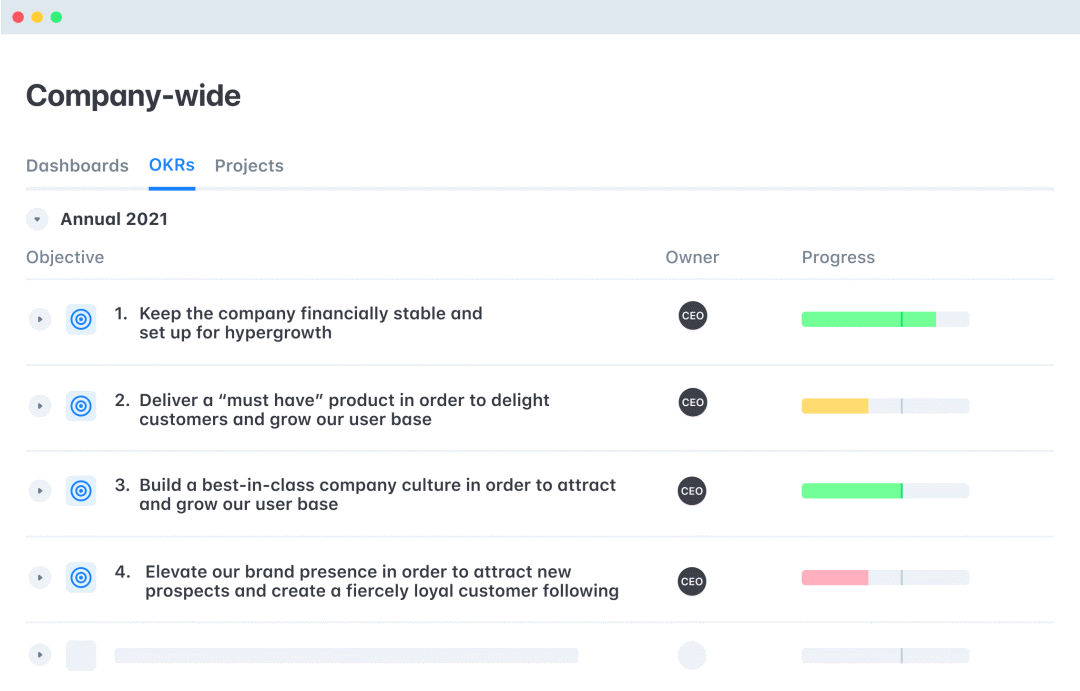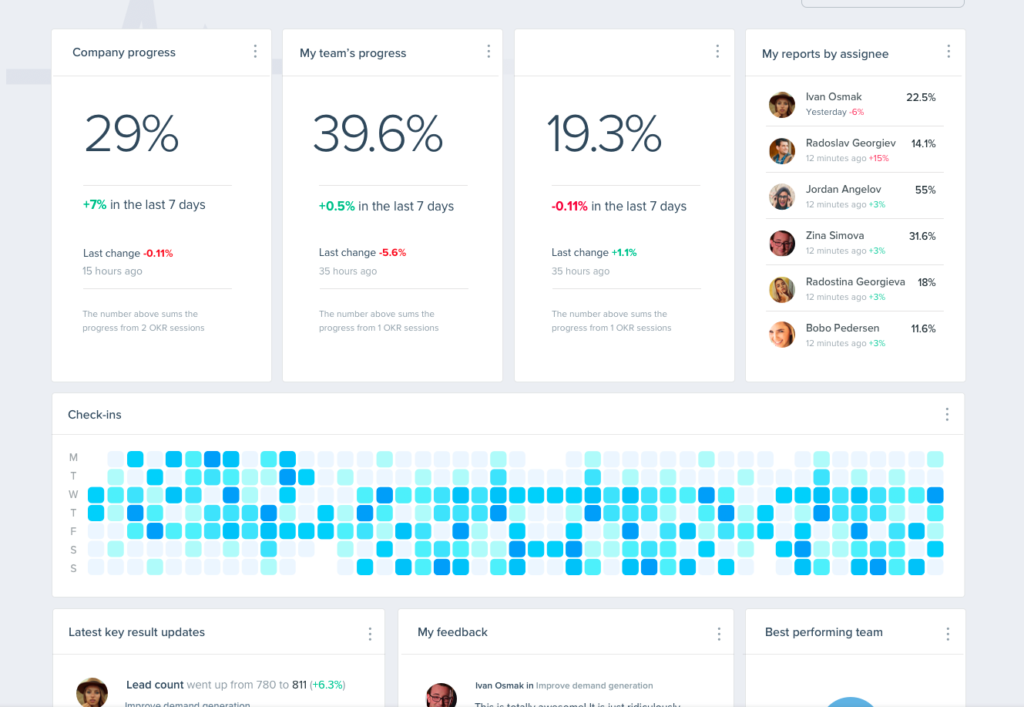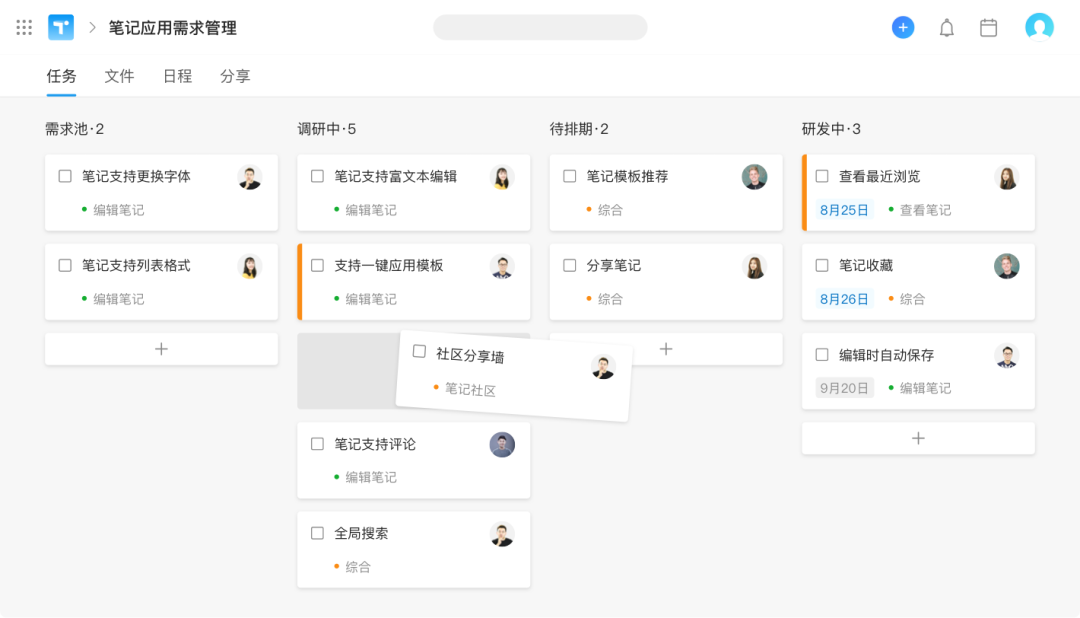Feishu was the last person to tell a good story.
Editor’s note: This article from the micro-channel public number “Silicon rabbit race” (ID: sv_race), of: Wang King, editor: Juni.
Suddenly, as a spring breeze came, companies large and small began to study OKRs.
This kind of performance management tool, which originated from Intel, became famous in Google, and popular in Silicon Valley technology giants such as Oracle and Amazon, has suddenly attracted much attention in recent years. Not only science and technology companies have promoted OKR working methods, but also non-technology organizations such as real estate companies, law firms and even the Public Security Bureau can’t help but try new things.
The popularity of this management concept has also spawned a hot market: OKR management software.
A report by the research organization Report Consultant shows: In 2019, the global OKR management software market size is about 600 million U.S. dollars; from 2019 to 2027, the compound annual growth rate is expected to be 15%. According to Tech Crunch statistics, in the past two years, OKR management software has received nearly 300 million US dollars in financing. All at once, OKR management software flourished.
1
The epidemic catalyzed the “VUCA” era, OKR took off with the wind
Speaking of performance management, KPIs are the most familiar to workers. The full name of KPI is Key Performance Indicator, which is the key performance indicator, which emerged in the process of industrial manufacturing enterprises moving towards refined management in the 1970s and 1980s. This set of management methods decomposes the strategic goals of the enterprise into actionable goals, which are distributed to departments and individuals at various levels, and a clear assessment of the completion of each employee is carried out.
OKR is not new. The full name of OKR is Objectives and Key Results, that is, goals and key results.
Its theoretical origin can be traced back to MBO (Management By Objectives) proposed by management master Peter Drucker in 1954. Silicon Valley legend Andy Grove is a fan of MBO theory. During his tenure as Intel’s CEO, he introduced and adjusted the MBO model to form the framework of today’s OKR, and led Intel’s transformation into the global microprocessor hegemon during his tenure.
Andy Grove later wrote his management ideas into this book
KPI emphasizes efficiency and standards, and plays an important role in fields that emphasize programmatic and standardized production, such as manufacturing. However, KPIs are more embarrassing in technological fields where innovation and breakthroughs are more important and people are generally knowledgeable. Sometimes not only can they not effectively motivate employees, but they become a shackles that limit creativity, such as “requiring R&D personnel to write X lines of code per month” Such a joke. On the contrary, OKR starts from goal management, giving employees more room for creativity and trial and error, which is more in line with the management of knowledge-intensive technology companies.
It’s like completing the unprecedented work of “building a human base on Mars.” When the path is not clear, it is unreasonable to formulate KPIs based on the boss’s hard work, and the workers have to deduct money. The risk of rushing to KPI cautiously. The OKR is after the goal of “building a Mars base” is determined, and then everyone is free to explore how to achieve it, and it can be modified and adjusted in the middle until the Mars base is completed.
So we see that OKRs are often associated with technology companies and their disruptive products, such as Google’s search engine and ByteDance Douyin. However, just a well-known technology company taking the lead will not make OKR so “out of the circle”. OKR can go from the technology circle to traditional industries and government agencies, and it is also inseparable from the new crown pneumonia epidemic.
A pandemic embodies the word “VUCA era” vividly: from governments of various countries, to families of three, from leading companies to entrepreneurial teams, all in “Volatile (unstable)” and “Uncertain (Uncertain), “Complex” and “Ambiguous” status. In this environment, the company’s strategy has to be adjusted flexibly at any time, and departmental and personal goals must also be responded to in a timely manner.
When policies and situations change rapidly, the top-down approach to dismantling KPIs is very risky. Once the direction of pouring a lot of resources fails, May endanger the life of the enterprise. The bottom-up feedback mechanism of OKR makes it easier to catch small and unpredictable opportunities and try them at a lower cost.
Under such a background, the management methods of enterprises in various countries around the world have concentrated on “turning”. As a result, OKR management tools are sought after by investment institutions.
2
Investors squeeze through the threshold, OKR management tools are hot
The times make heroes. Since 2020, the business of many OKR management software has grown rapidly.
Probably the most beautiful in the near future is Ally.io. This Seattle-based company was founded in 2018 and just announced the completion of a $50 million Series C financing in February of this year-such a growth rate and financing scale is quite amazing for a B2B SaaS company.
Coincidentally, Gtmhub announced in January this year that it had received US$30 million in Series B financing. It is also a young company established in 2015. Among the investors of these two companies, there are many well-known VCs such as Tiger Global Fund, Accel, CRV, and Insight Partners.
Ally.io interface
Gtmhub interface
Ally.io and Gtmhub are so sought after by investment institutions, which is not unrelated to their performance in 2020.
In the past year, Ally.io’s business has increased by more than 300%. Compared with the B round of financing at the end of 2019, Ally.io has added 600 new customers and its revenue has doubled by 5 times. Similarly, Gtmhub in 2020The number of paying users has increased by 10 times, and the annual contract value (Annual Contract Value) has also increased by 10 times. Looking back further, the business growth of Ally.io and Gtmhub in 2019 is also very rapid.
With the confidence of continuous growth, investors broke through the doors of the two companies. Gtmhub began planning financing in November 2020, and raised $30 million at the end of December. Ally.io is even more “Versailles.” Most of the money raised in the B round was not spent, and investors were chased by investors for another round. It only took 2 weeks to raise 50 million US dollars.
In China, OKR management software has also sprung up.
Feishu is the most famous. The story about the birth of Feishu has been passed on as a good story: ByteDance is searching for a suitable OKR management tool, so I developed it myself, and after 2 years of internal use, commercialized it into the market. Looking forward, there is Teambition.
This company, established in 2011, has been well received in small circles until it was announced in 2019 that it was acquired by Ali for US$100 million, which shocked many passersby.
However, there has not yet been a rising star such as Ally.io and Gtmhub chased by investors in China. Feishu relies on bytes to make itself blood, and struggles to advance in the cracks between Dingding and corporate WeChat; Teambition is relatively low-key after being acquired by Ali, and most people who eat melons are most concerned about the function of the network disk. As for Beisen’s Tita and Kuaishou’s Qingque, there are no big moves.
Teambition was originally a popular niche product in the field of R&D management
3
Similar to small differences?
The OKR management software that is on the cusp of the storm not only has a similar fate in the capital market, but also has similar products.
From the perspective of basic functions, OKR management software must have functions such as custom OKR, associated tasks and personnel, authority assignment, visualized target relationship tree, quantified progress and results, and visualized Kanban. In addition to the basic OKR management, each product has added some “careful machines”.Tendency, from function to interface, there is no essential difference.
Therefore, we have seen the old drama of “involving” price wars again. From the official price of the personal version and small team version only, the lowest price of Ally.io is equivalent to US$2.9 per person per month. Gtmhub sets the lowest price at US$1 per person per month; the German company Perdoo announced in order to seize the market. It is free for teams with less than 10 people; of course, Feishu/Lark is the most ruthless, directly all free (of course, the free version has slightly fewer functions and rights than the enterprise version).
4
I got on the Rockets, then what?
From a certain perspective, the popularity of OKR and OKR management software are in a complementary relationship. We use KPIs. Most of the time, we only need to know the KPIs of ourselves and the department, and almost ignore what other departments and colleagues are doing.
OKR emphasizes “context”, “transparency”, and “collaboration”, and requires the production and precipitation of a large number of documents. When the collaborative office software is not easy to use, it is very troublesome for all employees to update and check OKRs. With the basic tools of digital office, OKR was able to display its effectiveness.
Currently, OKR management tools have both market demand and capital boost. It seems that there is a smooth road ahead, but there are also many embarrassments. The switch to OKR in an enterprise is an adjustment of management and organizational models, involving changes in working methods and mentality from the senior management team to front-line employees, and it is not just a matter of purchasing a software. Companies that do OKR management software often hold seminars on OKR working methods, write cases and white papers, even open OKR management training courses, and send OKR coaches to companies, not only for customers to better use their own products, but also for education Market, make the cake bigger.
In this process, some companies are cautious and wait and see, some companies are confused and jump in with their sleeves first, and some companies have tried and then returned. For companies that are OKR management tools, there are unlimited opportunities. It is also a hard bone. In the case of a relatively high degree of product homogeneity, it is still unclear who can run to the end on this track.
Perhaps one idea is to bring your own story to the court. Feishu was the last person to tell a good and exciting story.
Reference material:
1.https://tech.china.com/article/20210109/012021_693423.html
2.https://www.reportconsultant.com/reports/Global-OKR-Software-Market-Size-Status-And-Forecast-2025-5726
3.https://techcrunch.com/2021/02/17/ally-io-rasies-50m-series-c-as-the-okr-software-market-stays-explosive/
4.https://techcrunch.com/2021/01/07/okr-focused-gtmhub-raises-30m-series-b-after-growing-3x-in-2020/
5.https://www.prnewswire.com/news-releases/allyio-sees-300-yoy-revenue-growth-as-businesses-turn-to-the-okr-platform-for-executional-alignment -and-agility-301192942.html





